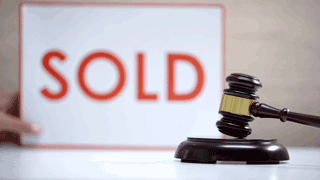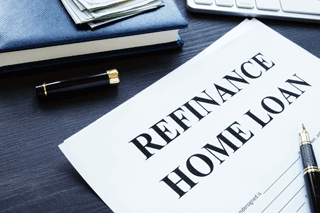Quote Of The Week
“Either people accept greater density in their suburb, or their children will not be able to buy a home, and seniors will not be able to downsize in the suburb where they live. This is a problem we can fix, but only if we make the right choices.”
Grattan Institute economic policy director Brendan Coates
Land Values Surge On Shortage
 Land prices have surged throughout Australia, with new data showing a 19.7% increase nationwide in the 12 months to March – but with some cities growing at higher rates.
Land prices have surged throughout Australia, with new data showing a 19.7% increase nationwide in the 12 months to March – but with some cities growing at higher rates.
Median lot prices in Hobart rose by 47%, followed by Sydney’s 43% and Melbourne’s 32%, according to the HIA’s Residential Land Report.
But senior economist Nick Ward suggests that rising construction costs and interest rates could dampen that in coming months.
“An unusually sharp rise in the price of residential land indicates the supply of land is not keeping up with new demand that has emerged during the pandemic,” Ward says.
The report shows the price of an average lot in Brisbane south, Adelaide Central and Hills district and Launceston more than doubled in the past 12 months, by 110%, 175% and 126% respectively.
The report says Sydney is the most expensive capital city for land with a median lot price of $1682 per square metre, followed by Melbourne’s $1044.
Auction Clearance Rates On The Rise
 Auction clearance rates are on the rise despite increased volumes of properties for sale, with buyers active during the first weeks of the Spring selling season.
Auction clearance rates are on the rise despite increased volumes of properties for sale, with buyers active during the first weeks of the Spring selling season.
CoreLogic analysis of 1,740 auctions across capital cities last weekend shows 62.5% sold, slightly up on the previous week’s clearance rate of 60%.
Real estate economist Nerida Conisbee says her analysis of 600 weekend auctions shows there were on average four registered bidders per auction, and 2.7 active bidders.
This was up on 3.4 average registered bidders per auction the previous week.
Last weekend was the busiest auction week since late June with the number of properties being taken to auction on the rise and up 17.6% in Melbourne on the previous week and 10.5% higher in Sydney.
Brisbane had 168 homes taken to auction, in Adelaide 132 properties were offered under the hammer and 102 in Canberra.
Adelaide had the highest clearance rate of 75%, followed by Canberra 66%, Melbourne 64%, Sydney 60% and Brisbane 53%.
A Million Switch For Better Deals
 As interest rates rise, the number of homeowners refinancing their mortgages continues to surge.
As interest rates rise, the number of homeowners refinancing their mortgages continues to surge.
Australian Bureau of Statistics figures show $17.9 billion worth of loans were switched to a different lender in July, following a record $18.2 billion in June.
A survey by digital property exchange PEXA shows many owners are taking advantage of the tactic of banks to offer better interest rate deals only to new customers.
Its survey of 519 homeowners who recently refinanced, or who intend to in the next two years, shows their main motivation is to save money.
More than one million Australians refinanced last year which on average resulted in a 0.4 percentage point reduction in their mortgage interest rate, which equates to a saving of about $1,524 a year on a $610,000 loan.
The savings for owners switching to a new lender was 0.5 percentage points, while those refinancing with their existing lender only achieved rates about 0.1 percentage points lower.
NIMBYs Make Housing Unaffordable
 Residents who don’t want further development within their communities are driving up house prices and rents for others.
Residents who don’t want further development within their communities are driving up house prices and rents for others.
Grattan Institute economic policy director Brendan Coates says the opposition to high-density development means many younger Australians are shut out of the market.
Coates says federal and state governments need to make tough decisions on housing policy to improve affordability.
“Either people accept greater density in their suburb or their children will not be able to buy a home, and seniors will not be able to downsize in the suburb where they live,” he says.
“This is a problem we can fix, but only if we make the right choices.”
Coates says an increase in medium or high-density development will meet demand for more affordable housing.
“It is a myth that all new first-home buyers want a quarter-acre block,” he says. “Many would prefer a townhouse, semi-detached dwelling or apartment in an inner or middle suburb, rather than a house on the city fringe.”
Rent Rises Linked To Employment Rate
 The housing crisis has become so bad that employers are increasingly having to offer accommodation in an attempt to lure staff, according to real estate economist Nerida Conisbee.
The housing crisis has become so bad that employers are increasingly having to offer accommodation in an attempt to lure staff, according to real estate economist Nerida Conisbee.
Conisbee says there are now almost as many advertised jobs as there are unemployed people and it comes at a time when there are significant housing shortages, with regional areas likely to have the biggest shortages and rent rises.
In some areas, annual rental growth has been well above 10%.
Conisbee says the Whitsundays, for example, has an unemployment rate of 2.8% and at the same time advertised rents are up by 12.5%. Areas such as Bowen and Airlie Beach in particular are experiencing problems.
In New South Wales the Port Macquarie-Hastings area has an unemployment rate which has declined from 6.2% to just 2.7% in the past year, meaning more people are moving to that area for work.
At the same time, rents increased by almost 20%.




